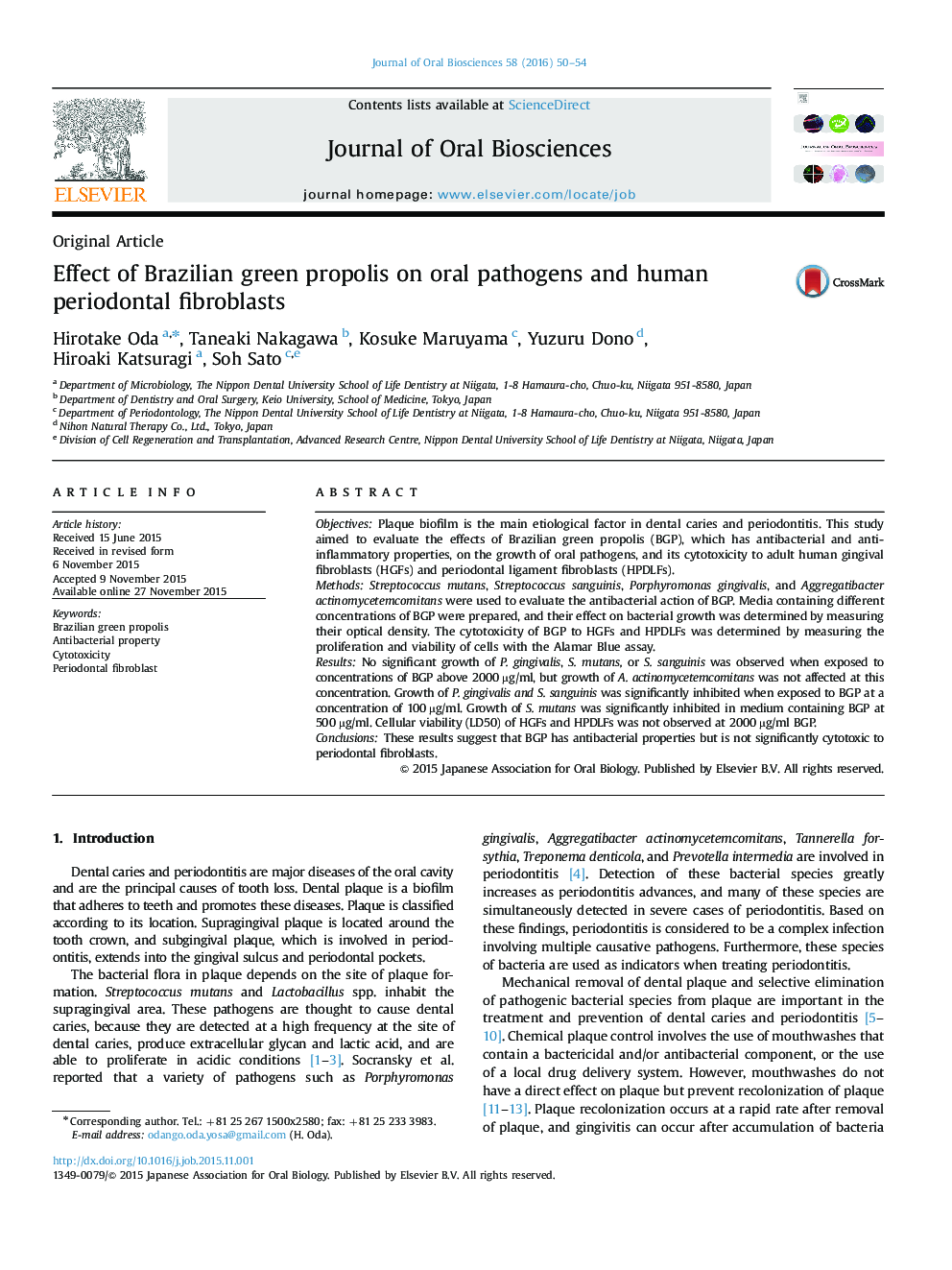| Article ID | Journal | Published Year | Pages | File Type |
|---|---|---|---|---|
| 2776774 | Journal of Oral Biosciences | 2016 | 5 Pages |
ObjectivesPlaque biofilm is the main etiological factor in dental caries and periodontitis. This study aimed to evaluate the effects of Brazilian green propolis (BGP), which has antibacterial and anti-inflammatory properties, on the growth of oral pathogens, and its cytotoxicity to adult human gingival fibroblasts (HGFs) and periodontal ligament fibroblasts (HPDLFs).MethodsStreptococcus mutans, Streptococcus sanguinis, Porphyromonas gingivalis, and Aggregatibacter actinomycetemcomitans were used to evaluate the antibacterial action of BGP. Media containing different concentrations of BGP were prepared, and their effect on bacterial growth was determined by measuring their optical density. The cytotoxicity of BGP to HGFs and HPDLFs was determined by measuring the proliferation and viability of cells with the Alamar Blue assay.ResultsNo significant growth of P. gingivalis, S. mutans, or S. sanguinis was observed when exposed to concentrations of BGP above 2000 µg/ml, but growth of A. actinomycetemcomitans was not affected at this concentration. Growth of P. gingivalis and S. sanguinis was significantly inhibited when exposed to BGP at a concentration of 100 µg/ml. Growth of S. mutans was significantly inhibited in medium containing BGP at 500 µg/ml. Cellular viability (LD50) of HGFs and HPDLFs was not observed at 2000 µg/ml BGP.ConclusionsThese results suggest that BGP has antibacterial properties but is not significantly cytotoxic to periodontal fibroblasts.
